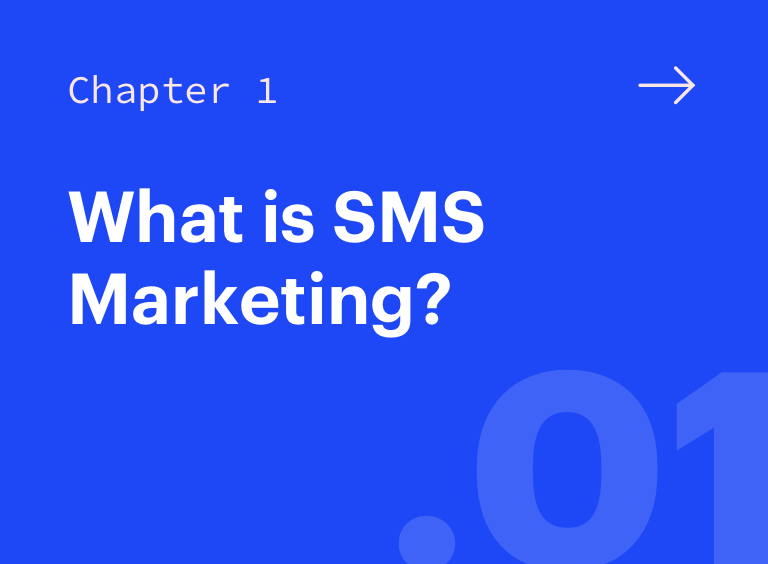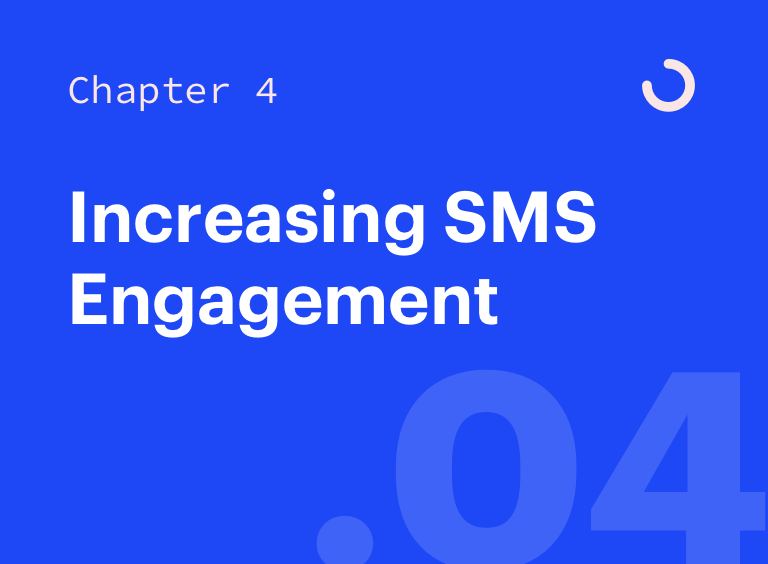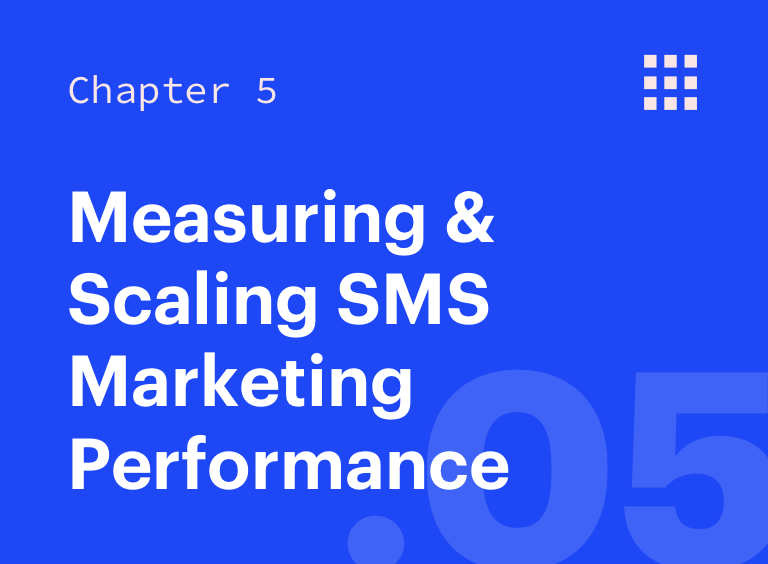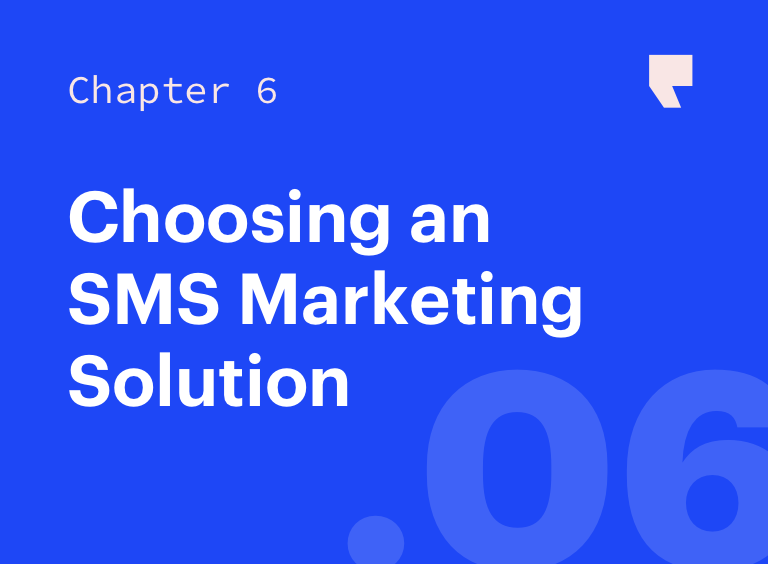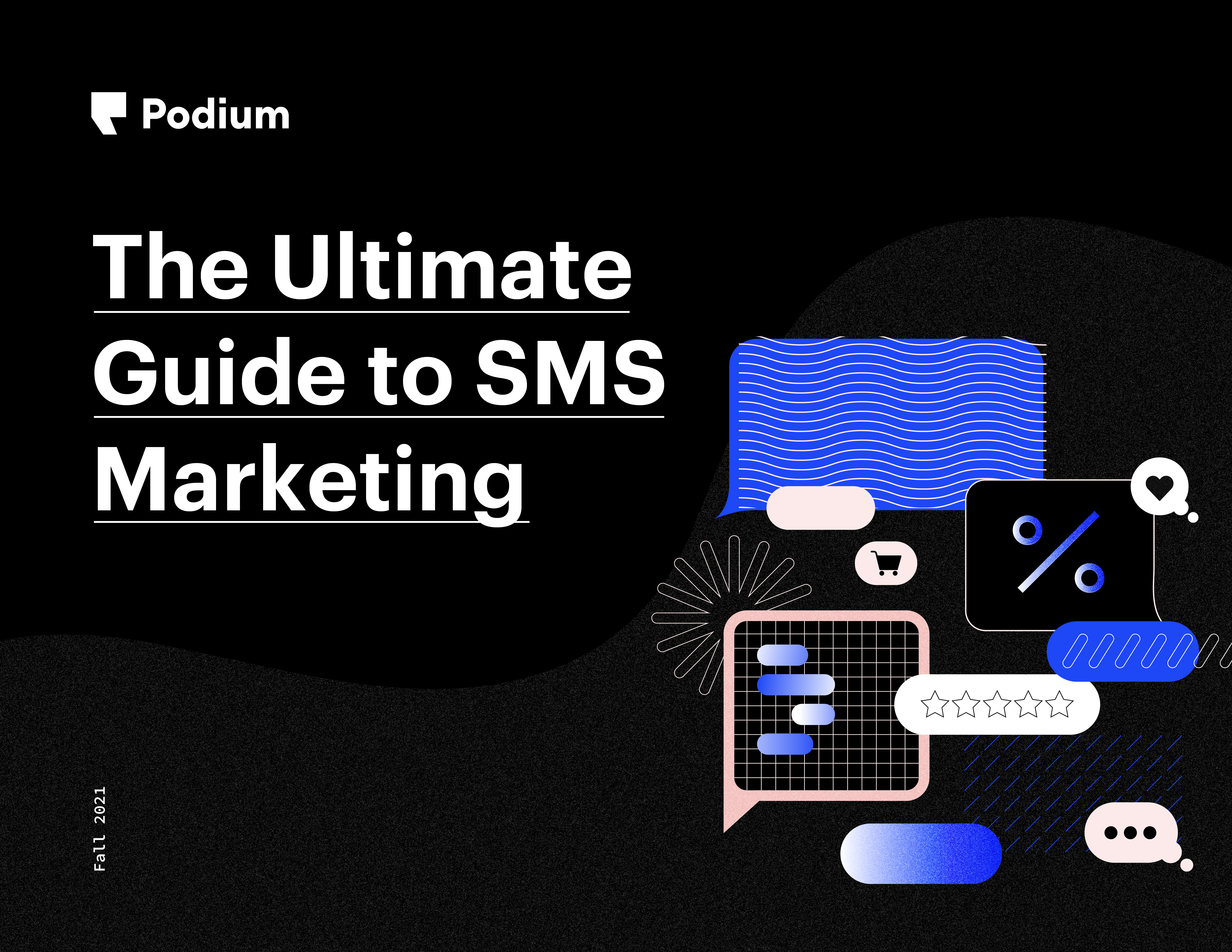
SMS Marketing
Measuring and Scaling SMS Marketing Performance
When it comes to optimizing your SMS marketing channel, experimentation is the name of the game. And it can increase your ROI, big time. Read on to learn:
- How to measure the ROI of your campaigns
- How to improve performance
- How to create and implement automated campaigns
Measuring the ROI of your SMS marketing channel
Successful campaigns aren’t created overnight. When it comes to optimizing your SMS marketing channel, experimentation is the name of the game. Being able to measure and communicate the ROI of any marketing investment is important for marketers and business owners alike. But in order to properly test, you need to understand key metrics of performance and external reporting.
Below are the parameters to assess the performance of your SMS marketing efforts.
Click-through rate – Click through rate, or CTR, is the percentage of recipients who’ve taken action to click on a link embedded within an SMS marketing message. This is an important metric to measure as it serves as an indicator of how people are interacting and engaging with your messages.
Response rate – Response rate measures how many recipients respond to a campaign. You can calculate this by dividing the number of responses by the total number of possible responses.
Unsubscribe/Opt-out rate – Regardless of how compelling or targeted your SMS campaigns are, you’re likely to see a handful of opt-outs with each campaign message. Unsubscribe or opt-out rate measures the percentage of users who’ve opted-out of receiving future SMS promotions after receiving a campaign. You are looking to keep opt-out rates below 5%.
Conversion rate – Conversion rate measures the percentage of users who complete the desired action specified in your message. This can be measured by dividing the number of recipients who have taken that action by the total number of recipients who have received that campaign message.
Attributable revenue – This is the revenue you are able to track to specific campaigns.
External reporting
UTM – UTM, or Urchin Tracking Module, is a code that can be attached to any URL to generate Google Analytics data for digital campaigns. Specific to Google Analytics, UTM helps track the progress of the campaign on all online platforms. If you use Google Analytics, consider including SMS marketing links with this code just as you would with any other campaign link. Link shorteners or text marketing software that shortens links for you will help ensure the link does not appear too long in your text.
When tracking the success of your campaigns, you also want to pay attention to your list growth rate. This measures how fast your opt-in list is growing and how well you’re acquiring new subscribers and retaining them consistently. This rate can be determined on a weekly, monthly, quarterly, or yearly basis.
After you calculate how much a customer spends on your product after a campaign, you can start to determine the lifetime value of each customer. This is helpful in spelling out the ROI of your campaigns and the value of each subscriber.
You also want to keep track of your list size. This measures the total number of customers who’ve opted in to your messages. Pay special attention to which opt-in touchpoints are gaining the most traction and at what times. For multi-location businesses, track which locations are seeing the most collections and implement their methods across the board (if applicable).
Other helpful metrics to track can include coupon redemptions, referrals (if you’re running a referral campaign), and recovered revenue from abandoned carts.

Improving Performance
As we mentioned, what makes a campaign successful varies according to business model, industry, and target audiences. Careful testing is key in learning what works best for you.
That being said, taking the actionable steps in this guide are proven ways to improve performance across the board and give your numbers a boost.
Collect quality opt-ins
Segment effectively
Craft compelling copy
Use automations and send SMS campaigns at the right times
Message compliantly
Reply to messages quickly and with valuable information
Work according to an effective campaign content calendar
Use an SMS marketing platform
As you work to increase performance, refer back to this list and the information in this guide to see what you might be missing or where you can optimize further. With simple steps, you can turn your campaigns into high-performance converting machines.
Refining and testing
Testing is a good way to build confidence around the effectiveness of your SMS marketing messages as you are learning. In summary, this is done by running two (or more) variations of a promotion to see which performs better. By running tests for your SMS marketing channel, you can learn which campaigns are most effective and know which ones to invest in to maximize ROI.
There are many excellent guides available on how to conduct true A/B tests—even if you’re not a mathematician. True statistically significant testing requires an established subscriber list or relatively large samples, which are often a barrier if you’re new to SMS marketing. But if you’re learning how to effectively message on SMS, even small tests can be a useful exercise to build your confidence in the channel and pinpoint some effective messages.
Regardless of whether you’re engaging in true A/B testing or testing a small subscriber group to get comfortable with SMS as a channel, you first want to define a clear test goal. Or rather, ask yourself—what exactly do you want to test?
Wording – It’s important to use language that resonates with your specific audience. For SMS marketing, where messages tend to have shorter character counts, every piece of copy matters. Take the time to be deliberate in your word choice, abbreviations, and use of capital and lowercase letters.
Call to Action – Try using different versions of your CTA within your marketing messages and see which drives more subscribers to take action. Make sure to consider including CTAs that can be tracked by your text messaging platform—including, “click on this link” or “reply back to this message.”
Length – While the rule of thumb is to keep messages short and concise, there are some marketing use cases that lend themselves to longer messages, like educational promotions about specific products and services.
Layout – This refers to how you format your marketing messages, including line breaks and how you structure the content of your message.
Multimedia content – Some promotional types can be improved upon by embellishing your messages with images or GIFs. A good example of this includes new product launches where an image can be a powerful way to clearly communicate what you’re offering.
Offer – Experiment with different offers and incentives in your messages and see which performs best.
Send time – Test out different times during the day or days of the week to run your messages.
For effective testing as a beginner, you should choose a single variable on the list above to test. To start, prepare two or more versions of your marketing message so that you’re clear with the differences between each of the relevant components.
Then, define your target audience for testing and create a sample of recipients. Be sure that the recipients who receive your test are similar and random so you don’t draw the wrong conclusions. And, keep in mind: if you’re testing with a small audience, your results with a broader audience may vary quite a bit from the test.
Once you have developed some variants to test and selected your test groups, it’s time to craft your SMS marketing campaign and begin testing.
Bottom line: for faster learning and more return on your effort, you can perform small experiments with SMS promotions, establish which ones work best, and then send them out to a larger audience, subscriber list, or segment.

Creating and Implementing Automated Campaigns
SMS marketing automation is the practice of establishing predefined rules to trigger personalized SMS messages based on specific actions customers take—or don’t take—using SMS marketing automation software.
You might send an automated text to welcome someone who signs up to receive your promotional messages, offer similar product recommendations after a customer has purchased from your site, or thank a customer who left you a 5-star review.
Implementing automations can be extremely effective in leveraging software and technology to take on repetitive, manual tasks and consequently free up time and resources. These resources can then be redirected towards more valuable tasks, such as responding to customer inquiries and questions.
SMS marketing automation software can also be used to help customers learn more about your business, products, and services. It can encourage them to keep coming back or remind them why they bought from you in the first place. Using automated workflows can be extremely effective for lead nurturing and ultimately drive sales from potential customers and existing ones.
By streamlining and automating SMS marketing tasks, local businesses can significantly increase operational efficiency and grow revenue faster.
Automation terms and definitions
Many local businesses don’t understand what marketing automation is. If that’s you, no sweat! This section is all about defining common SMS marketing automation terms.
- SMS automation – A single text message or series of text messages sent to a contact based on a specific trigger
- Campaign – Any promotional or transactional content sent to an audience/segment that’s created and measured by an SMS marketing platform, including automations
- Workflow – The specific configuration of settings, schedule, and content for automated SMS marketing messages
- Delay – The period of time between a trigger event and a send
- Queue – A batch of contacts who have met an automation’s criteria and are waiting to receive the next message in a series
- Trigger – The event that starts an automation single message or message series (ex: someone opts-in to receive promotional text messages or has left a review)

Why you should automate your SMS marketing strategy
There are a number of reasons you should automate your SMS marketing strategy. Most of them involve significantly expanding your reach, scaling your strategy, and doing more with less.
1. Boost customer engagement
Customer engagement is the ongoing, value-driven, emotional relationship between your customers and your business. When you provide a positive customer experience, your customer becomes more engaged. And highly engaged customers purchase more and advocate more for your brand.
By significantly improving your customer experience, automation boosts your customer engagement, leading to free marketing for you and higher revenue.
2. Make the most of your marketing resources
These days, marketers feel pressure to do more with less. To keep up with a fluctuating marketplace, businesses need to generate more leads, grow revenue, and close deals faster.
Automation frees up marketers’ busy schedules with automated tasks so they can focus on more strategic work. It allows you to get more done and reach more people with the finite resources you have available.
For local businesses, this means less time spent on tedious and repetitive manual tasks (i.e., manually sending out repeat campaigns). Now you can redirect your time to higher value activities and more important priorities, like creating new SMS marketing promotions.
3. Improve your customer retention rate
As you know, it’s much easier and more cost effective to sell to an existing customer than convert a new one. With automation, you can stay in touch better than ever before.
Schedule your messages so that your customers don’t go too long without hearing from you—and be sure the copy is relevant to maximize its impact.
Bad example:
Hey there—need new sheets? Check out Pinki Palm online!
Good example:
Hi Sadie, hope you love your Pinki Palm sheets as much as we do! ❤️ Take 40% off your next set through Fri—on us. Txt with any questions about inventory!
4. Scale your marketing strategy
Sending out an SMS series manually is limited by your staff size and the resources you have available to dedicate to it. It can also be difficult to stay on schedule if your customer base has suddenly doubled or tripled in size.
Sending automated SMS campaigns allows you to scale your marketing efforts. With the right tools, you can send a message every time someone opts into receiving promotional text messages via an online sign-up form. There’s no need to ensure that a staff member is available to do it.
With SMS marketing automation, customers automatically integrate with your system as soon as they perform any actions that you track. Their behavior tells your system what to send them without any additional demands on your limited resources.

Single vs. series automations
There are two main types of SMS marketing automations – single message and message series.
Single message automations are all about sending a single message after a trigger event occurs. (i.e., someone opts-in to receive promotional texts or someone leaves a 5 star review.)
Message series automations progressively develop relationships with leads through nurture messages, connect them with your business and product, and then strike when a lead is ready to convert.
Automation use cases
There are many effective use cases for automation, starting with the welcome message. This is automatically sent after a subscriber opts-in to text message promotions to welcome them to your business, provide a friendly greeting, and share some information about your SMS marketing channel using your brand’s voice.
Typically, customers who have just opted-in to SMS promotions are highly engaged at this point in the customer journey. You can take advantage of this opportunity by offering mobile-exclusive offers as part of your welcome message.
Additional use cases include post-purchase messages, review invites, appointment reminders and scheduling, abandoned cart reminders, and after-hours responses.
IMPORTANT DISCLAIMER: This guide is for informational purposes only. It is not intended as legal advice or a comprehensive summary of the law. You are encouraged to retain your own legal counsel to review this guide and assess your unique text messaging business scenario. In addition, a business can do many things, including use of the Podium system outside its intended use, which can give rise to liabilities beyond those addressed in this guide.
